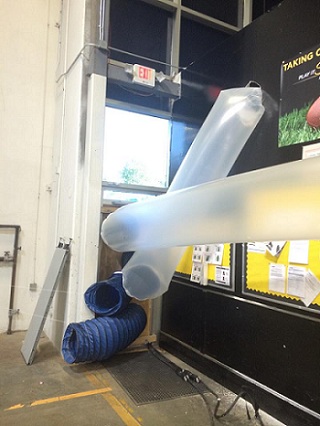Why Is It Important to Control Humidity Inside A Cleanroom?
 Relative humidity: it’s among the environmental conditions typically specified for cleanroom operations. The relative humidity inside a semiconductor cleanroom typically is controlled to a target value within the 30 – 50% range, and tolerances as narrow as ± 1% for a few areas, like photolithography—or even less for DUV processing—and relaxing to ± 5% in other areas.
Relative humidity: it’s among the environmental conditions typically specified for cleanroom operations. The relative humidity inside a semiconductor cleanroom typically is controlled to a target value within the 30 – 50% range, and tolerances as narrow as ± 1% for a few areas, like photolithography—or even less for DUV processing—and relaxing to ± 5% in other areas.
Keeping make-up air inside those specifications all throughout the year will entail operating expenses and capital. However, why will relative humidity control inside a cleanroom warrant these types of expenses?
Put plainly, due to relative humidity influencing numerous factors which might degrade general cleanroom performance, which includes:
- Water absorption
- Photolithographic degradation
- Moisture condensation
- Metal corrosion
- Static charge build-up
- Personnel comfort zone
- Bacteria growth
Bacteria and additional biological contaminants (mites, fungi, viruses, mold) thrive in relative humidity that is above 60%. Also, a few bacterial populations increase as relative humidity is higher than 30%. A 40 – 60% relative humidity range minimizes the effect of respiratory infections and bacteria.
Also, the 40 – 60% relative humidity range falls within the personal comfort zone. Greater humidity becomes oppressive; and humidity that is lower than 30% causes cracked skin, dryness, unhappy personnel and respiratory discomfort.
High humidity minimizes the build-up of static electrical charge upon a cleanroom surface—a desirable effect. It is low humidity which favors charge buildup and possibly damaging electrostatic discharges. Static charge starts dissipating quickly when the relative humidity goes beyond 50% yet persists for lengthy times on unground or nonconductive surfaces while below 30%.
As a relative humidity of 35 – 40% might be an acceptable compromise, typically, semiconductor cleanrooms incorporate extra control features for restricting buildup of static electrical charge.
The rate of most chemical reactions, which includes corrosion processes, rises with increasing relative humidity. Every surface exposed to ambient cleanroom air is quickly covered with at least one layer of water. As those surfaces are thin metal films of a composition reacting with water, high humidity will feed this reaction. Thankfully, some metals, like aluminum, will form a protective oxide with water which blocks more oxidizing reaction; copper oxides, on the flip side, aren’t protective; therefore, copper surfaces are prone to high humidity.
At higher relative humidity, capillary forces caused by condensed water will form a bonding bridge in between the surface and particle and may boost particle adhesion to a silicon surface. The effect—Kelvin condensation—isn’t important at relative humidity that is less than 50% yet may constitute the dominant force of particle adhesion within relative humidity that is as low as 70%.
The most pressing necessity for humidity control inside a semiconductor cleanroom derives from photoresist sensitivities. It is photoresist which demands the tightest control limitations due to its properties being so relative humidity sensitive.
Both temperature and relative humidity are crucial for precise dimensional control and resist stability. Photoresist viscosity, even at constant temperature, rapidly decreases with a rise in relative humidity. Of course, changing viscosity changes the thickness of the resist film that is spun-on by a fixed coating recipe.
Additionally, resist swelling after a bake cycle may be aggravated by water absorption at higher relative humidity. Plus, resist adhesion may adversely be impacted by higher relative humidity; low humidity (approximately 30%) facilitates resist adhesion even without a polymeric modifier, like HMDS.
Relative humidity control inside a semiconductor cleanroom isn’t optional. However, sometimes, it is great to assess the bases and reasons for universally accepted, common practices.
SCI’s application knowledge can support disaster restoration contractors in the area of Clean Room Moisture Control. Contact us today!
